
Wh- Questions: When, Where, What, Why, Who or How ?
Ss complete the questions with When, Where, What, Why, Who or How . Then, they find the answers and number them according to the questions.
Level: elementary
Age: 8-14
Type: worksheet

Is it so SIMPLE when it comes to choosing between PAST, PRESENT or FUTURE
This is a ws for beginners. Here�s one little tip. Try to modify the worksheet. Instead of the names of my kids use the names of yours. They�ll love it when it comes to asking each other personal questions! hope you like it. Have not-so-hard Monday! =)
Level: elementary
Age: 8-17
Type: worksheet

TEST- KIDS SAY PARENTS DON�T SET OR ENFORCE RULES ON MEDIA USE-VERSION B
Reading/Comprehensio n activities. Language Use- Vocabulary+Grammar(C onditional sentences, Passive Voice, Connectors).Key is provided.Writing- a science fiction narrative. Hope it may be useful to you.Have a nice weekend. Hugs:) Teresa
Level: intermediate
Age: 14-17
Type: worksheet

A or AN - Indefinite Article
This is a simple and very colourful exercise on articles, which can be used for instance as a warm-up with beginners.
Level: elementary
Age: 8-10
Type: worksheet

For or Since
Ss have to complete the sentences with the appropriate tense of the verb, and use for or since. Hope you enjoy it! =]
Level: intermediate
Age: 12-17
Type: worksheet

A or An? part 2
This worksheet includes one activity on the use of the articles �a� and �an� before the names of fruit and vegetables. Besides using �a� and �an�, students have to unscramble the names of the fruit and vegetables they see in the pictures. I hope you like it.
Level: elementary
Age: 6-17
Type: worksheet

Halloween - Story + activities
A worksheet I used with my students last week to talk about Halloween. The text is simple and questions are on the second page.
Level: intermediate
Age: 8-17
Type: worksheet

and...but...or...can /can�t
Choose a connector to join ideas/abitilies.
Level: elementary
Age: 8-14
Type: worksheet

ANIMAL�S DOMINO. FULLY EDITABLE AS YOU TEACH OR LIKE ( 3/3 )
3RD PART OF THE DOMINO. HAVE FUN AND ENJOY THE ACTIVITY WITH YOUR CHILDREN. THANKS IN ADVANCE
Level: elementary
Age: 5-10
Type: worksheet

Verbs followeb by gerund "ing" or infinitive "to"
Easy rules to follow to learn when to use ing or to.
Level: intermediate
Age: 12-100
Type: grammar-guide

Practice using WHICH ONE or WHICH ONES to make questions
This worksheet is a practice for using WHICH ONE or WHICH ONES to make questions. The students read the examples, then choose a famous person and compose questions using which one/ones to ask him. The students then share their questions with a partner and they role play that they are the famous people and answer each other�s questions in an intervi...
Level: intermediate
Age: 10-12
Type: worksheet

When or While With Simple past and past continuous tense
When or While
Level: elementary
Age: 10-17
Type: worksheet

Verb 2 b -am,is or are.
Verb to be.
Level: elementary
Age: 6-17
Type: worksheet

Picture-based conversation : topic 70 - Scotland Yard & MI (5 or 6) vs CIA & FBI
�My name is Bond, James Bond !� Does 007 mean �license to kill� or �unable to do physical exercises� ? Did you know that Ian Fleming (the author who wrote Bond saga) was really a spy ? Do you think that the books reflect the real life of the secret agents ? Several questions and a word bank. FOR YOUR EYES ONLY !
Level: advanced
Age: 18-100
Type: worksheet

am,is or are?
A TASK TO MAKE THE DIFFERENCE BETWEEN THEM.
Level: elementary
Age: 9-12
Type: worksheet
|

FRAUDSTER OR HONEST CITIZEN [tense use practice]
Greetings! Some of you may have tried teaching their students by a wonderful Gateway B1 Student�s Book published by Macmillan. The second unit of the course covers criminal affairs and focuses the use of Past Simple. My students once played a game where they could turn out either fraudsters or honest citizens depending on their answers for the ac...
Level: elementary
Age: 12-100
Format: PowerPoint
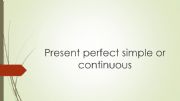
present perfect simple or continuous
This is a presentation where it is explained the difference between present perfect simple and continuous. There are also some activities to practise the tenses.
Level: intermediate
Age: 14-100
Format: PowerPoint

would you like
Level: elementary
Age: 6-8
Format: PowerPoint

Technology /vocabulary lesson
electronic devices and verbs slideshow
Level: intermediate
Age: 12-15
Format: PowerPoint
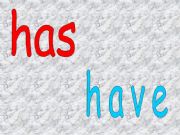
Has or Have Power Point
A power Point that explains when do we have to use has or when we should use have.
Level: elementary
Age: 5-8
Format: PowerPoint
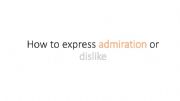
How to express admiration or dislike
How grammar, phonology and vocabulary help to express contrasted feelings and reactions: admiration vs dislike.
Level: intermediate
Age: 10-16
Format: PowerPoint
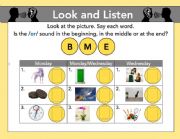
Look and Listen: Beginning, Middle and End -or and -ore
Look at the picture and name it. Slowly stretch the word sound by sound. Listen for the /or/ sound. If it is in the beginning, type B in the yellow circle. If it is in the middle, type M in the yellow circle. If it is at the end, type E in the yellow circle.
Level: elementary
Age: 4-7
Format: PowerPoint
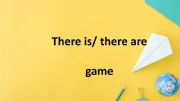
some, any
There is/are and some/any
Level: elementary
Age: 9-14
Format: PowerPoint
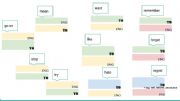
ING or TO - verbs changing meaning (stop, remember, forget, regret, mean, try, go on, want, like, hate)
There is the full list of explanations and examples of how to use ING or TO verbs that change their meaning (stop, remember, forget, regret, mean, try, go on, want, like, hate). The colours show how they might be grouped logically for better memorising (red for the past events, yellow for the actions, blue for regrets, green for all other things). ...
Level: intermediate
Age: 10-100
Format: PowerPoint

Agree or disagree? Speaking.
The presentation contains a range of more and less controversial statements that studnets have to give their opinion on.
Level: intermediate
Age: 15-100
Format: PowerPoint
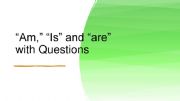
Was or Were Lesson
Powerpoint on past tense to be verb "was" and "were" used with pronouns.
Level: elementary
Age: 7-100
Format: PowerPoint
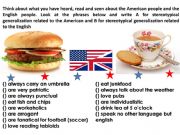
American and English Stereotypes
Level: intermediate
Age: 14-16
Format: PowerPoint
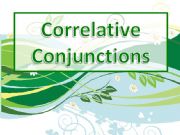
Correlative Conjunctions
Sample sentences and eplanations of correlative conjunctions followed by a short quiz
Level: intermediate
Age: 10-100
Format: PowerPoint

MODALS OF CERTAINTY
teach modals by explaining what are they for, with examples and how they are used and end by practicing
Level: elementary
Age: 11-15
Format: PowerPoint

Long & Short Vowels - Game
Level: elementary
Age: 9-100
Format: PowerPoint
|
|